Botswana Landmarks and Monuments
(Botswana, BW, Southern Africa)
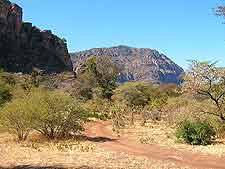
Botswana's most popular landmarks range from a group of large baobab trees to giant-size footprints fossilised in the rock. Other natural attractions include expanses of salt flats, the Kalahari desert and some very beautiful mountains.
For tourists who enjoy a spot of adventure, Botswana is the perfect destination to find both natural and manmade African landmarks, such as both the famous Tsodilo Hills and the much-climbed Kgale Hill.
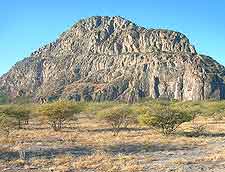
Tsodilo Hills
Address: Tsodilo, Botswana, BW, Southern Africa
In the north-west of Botswana, the remote Tsodilo Hills rise from the surrounding plain. Three of the hills bear local names - 'The Male', 'The Female,' 'The Child', while the fourth remains unnamed. The Tsodilo area is home to a series of rock paintings thought mostly to be painted by the Bushmen. Indeed, there are over 500 individual painting sites, making this one of the most significant rock art locations in the world. The best examples can be found at the northern part of the 'Female' hill.
Open hours: daily
Admission: free
Kgale Hill
Address: Gaborone, Botswana, Africa, BW
Kgale Hill is an unmissable landmark situated on the western side of Gaborone. Visitors who take the time to hike to the top will be well rewarded with magnificent views of the city and the Gaborone Dam. Hikers may also get to spot one of the black eagles which is said to nest in the Hill's cliffs.
Open hours: daily
Admission: free
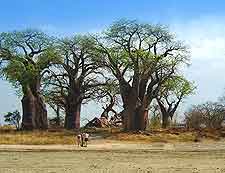
Baines Baobabs (Seven Sisters)
Address: Nxai Pan National Park, Botswana, BW, Southern Africa
This group of trees is also known as the 'Seven Sisters'. A popular stop-off on many visitors' itineraries, the trees were made famous by Thomas Baines, who painted them in 1862. The seven gigantic trees dominate an island on the edge of Kudiakam Pan, on the southern side of the
Nxai Pan National Park, and are particularly unusual in their appearance, since it is extremely rare that African baobab trees (Adansonia digitata) grow so closely together in natural clusters.
Open hours: daily
Admission: permits required for entry to the area
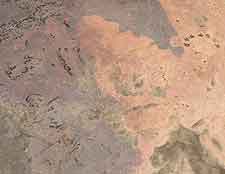
Matsieng Footprints
Address: Gaborone / Francistown, Botswana, BW, Southern Africa
The Matsieng Footprints can be found between Gaborone and Francistown in the south of Botswana. The legend goes that they belong to a giant called Matsieng, who is said to have emerged from a hole in the ground, along with his animals and people. Several footprints can be found spread over vast distances, captured for ever in the ancient sandstone rock. The largest measures some 340 mm / 13 inches long. Thought to be between 3,000 to 10,000 years old, the footprints are actually more likely to have been created by the Basarwa people who used to inhabit the area.
Open hours: Thursday to Monday
Admission: free
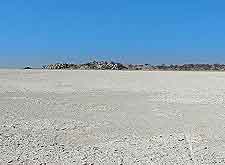
Kubu Island
Address: Makgadikgadi, Botswana, BW, Southern Africa
Tel: +267 297 9612
Kubu Island was once submerged under the waters of a lake. Today, this rock island rises out from a white sea of salt. Whilst there are other rock islands in the Makgadikgadi region, this is by far the best known. Visitors can look out for ancient stone cairns, fossilized bird droppings and Stone Age artefacts. Three traditional taboos surround the islands: no hunting of wild animals, no collection of wild fruits and no removal of the island's rocks.
Open hours: daily
Admission: free
Livingstone Cave (Kobokwe Cave)
Address: Gabane, Botswana, Africa, BW
The explorer David Livingstone is said to have once visited this cave, dismissing local traditions that the cave was inhabited by evil spirits. Located in the village of Gabane, just a short distance from Gaborone and Molepolole, on the road leading to Thamaga, the cave surprisingly remains undeveloped, despite its popularity.
Open hours: daily
Admission: free
 Botswana's most popular landmarks range from a group of large baobab trees to giant-size footprints fossilised in the rock. Other natural attractions include expanses of salt flats, the Kalahari desert and some very beautiful mountains.
Botswana's most popular landmarks range from a group of large baobab trees to giant-size footprints fossilised in the rock. Other natural attractions include expanses of salt flats, the Kalahari desert and some very beautiful mountains.


